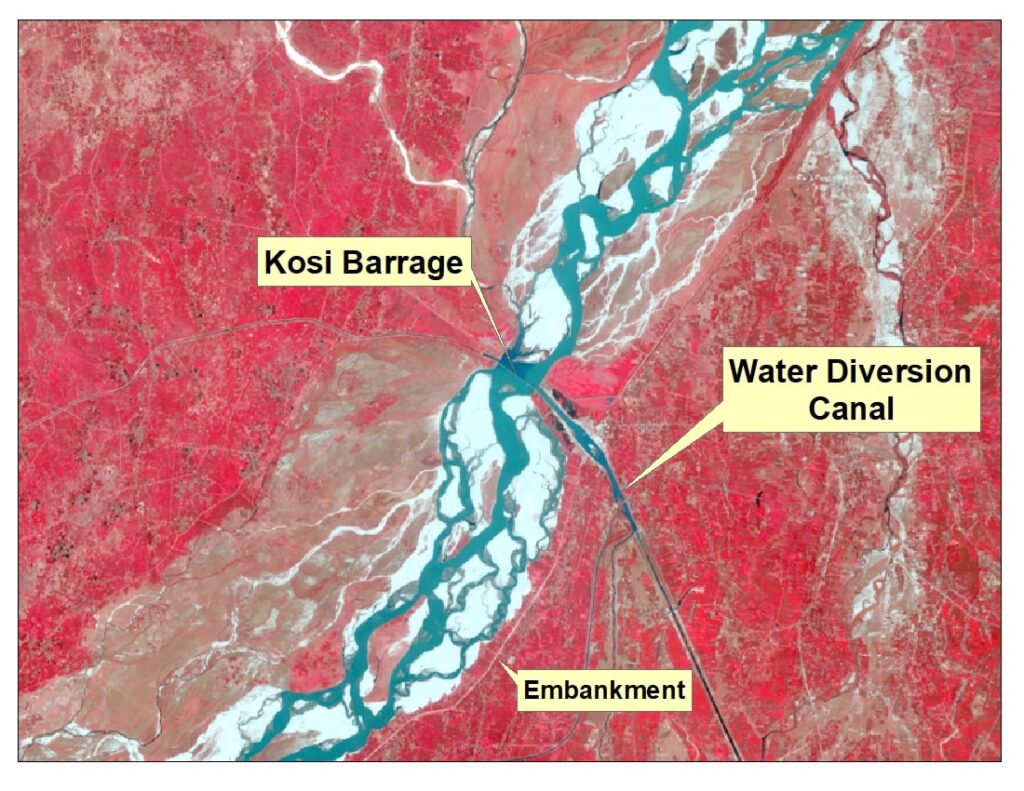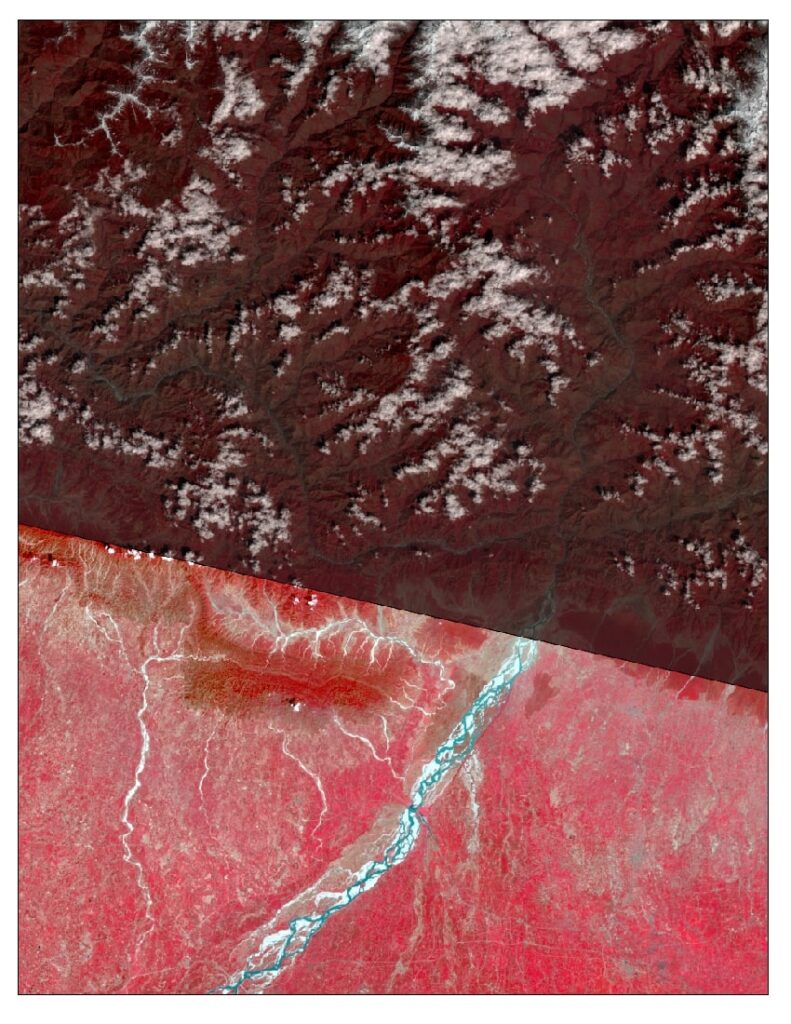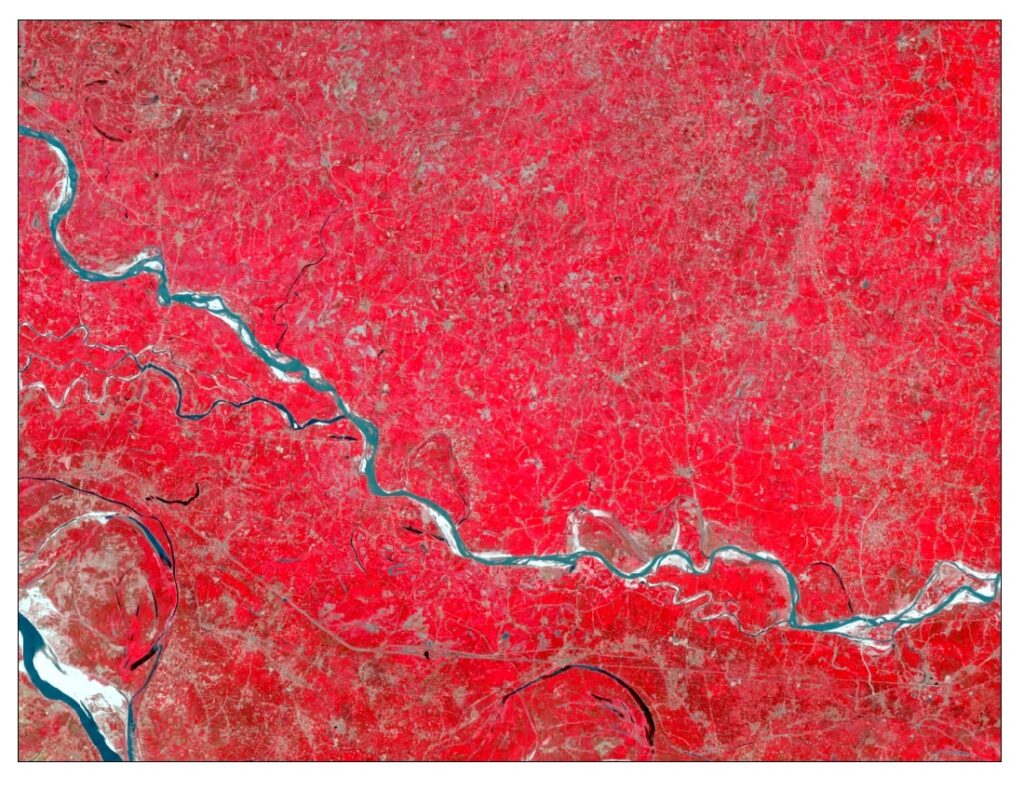The Kosi River

The Kosi River is one of the most dynamic river in the world. It originates from Himalayas and passes by China, Nepal and India before joining with the Ganges River at Kursela, Bihar, India. The total length of the river is about 720 km.
Planform Nature
The planform nature of the Kosi River differs it from the other rivers in the world. It has both braiding and meandering character. The Kosi River has steep slope of 73 cm per km at the u/s but it is very flat at the d/s and close to 5 cm per km.

Upstream of the Kosi Barrage (Image Source: USGS; Map prepared by the Author) 
Downstream of the Kosi Barrage (Image Source: USGS; Map prepared by the Author)
The u/s part shows the braided while the d/s part the meandering nature. The transition reach in the middle of braided and meandering also visible. This tells the dynamism of the river.

Braided Planform (Image Source: USGS; Map prepared by the Author) 
Meandering Planform (Image Source: USGS; Map prepared by the Author)
Tributaries of the Kosi River
There are ten tributaries of the Kosi River. Seven are in the Nepal while three are in India. These are Arun, Tamur, Sun, Dudh, Tamba Kosi, Indravati, Likhukhola, Kamla Balan, Bagmati and Bhutahi Balan.

Tributaries of the Kosi River (Source: Internet) 
Transition Reach between Braided and Meandering (Image Source: USGS; Map prepared by the Author)
The river shifting is very usual for the Kosi River. The shifting of the course was observed by 112 km in the last two centuries. But the river is trained by the series of spur and embankment now.
Hydro-morphology of the Kosi River
Moreover, the mean annual flow is 1800 m3/s which is even less than the flood flow of the Gorai River. But it rises very high during peak time and it is close to 24000 m3/s. In addition to that, high sediment is carried by the river each year and listed in the top ten in the world.
Additionally, flood caused by the river is a big concern for those who living along its bank in Bihar and called the sorrow of Bihar. It breaches the embankment and affects the society by damaging of goods, assets and life of the people. Such major event in the recent time occurred in 2008 at Kushaha, 12 km u/s of the Kosi Barrage.
River erosion occurs mainly at the d/s end of the river where the river exhibits the meandering facet.
Impact of the Kosi Barrage
The main feature on the Kosi River is Kosi Barrage. It is constructed to divert the flow to irrigate the farming land. It lies in Nepal but India controls it. Hence, the shape of the river at the d/s largely depends on the operation of the barrage and dictates the direction flow whether it will flow along the left bank or the right bank. It also changes the shape and direction of the internal channel. In summary the barrage is blessing for all.
